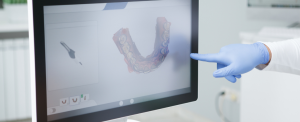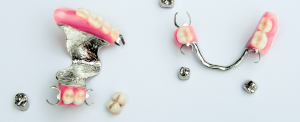Well, this may seem like a chimera, it could actually be a reality thanks to 3D printing. The leading provider of dental solutions, Glidewell, has announced a fully digital and 3D printed sleep device, called Silent Nite® 3D Sleep Appliance, which could be useful for patients suffering from snoring and mild to moderate obstructive sleep apnea.
Sleep apnea and snoring: a common problem with a cumbersome solution

Sleep apnea is a common but serious condition, in which a person’s breathing is stopped and restarted while sleeping, which prevents enough oxygen from being obtained, leading them to problems related to the brain, heart, kidneys and metabolic health conditions. Current estimates by the National Council on Aging show that obstructive sleep apnea affects approximately 39 million adults in the US. USA and 936 million adults worldwide. Snoring is even more frequent.
The worst
The treatment is usually cumbersome. The most common is a CPAP (continuous positive airway pressure) machine that is used to keep the airways open while you sleep; however, it is noisy and it can be difficult to travel with it. According to Glidwell, this mandibular advancement device allows you to hold the lower jaw and the tongue forward to make more space. This benefits breathing and prevents snoring.
3D printing: the revolution in digital dentistry
Digital dentistry has increased rapidly along with the use of 3D printing as a way to obtain more personalized and effective solutions, and this is another example of its success. With the Silent Nite 3D sleep device, Glidewell hopes to provide a lightweight and personalized solution that can guarantee a “good night’s sleep practically anywhere.”
Although the exact process and material of the product were not mentioned, it is presumed that the device is made of durable resin cured by light, produced with one of the photopolymerization processes of the tank. Relatively common process in dentistry due to the ability to create very accurate and clear pieces with the necessary properties, including biocompatibility.
Silent Nite 3D: a personalized and effective solution
In terms of design, transparent devices gently move the jaw forward with nylon connectors that can be adjusted in increments of 0.5 mm in a 10 mm section. This keeps the airways open and prevents them from collapsing during sleep, which allows it to be used as a treatment for both sleep apnea and snoring. The connectors are also replaceable to ensure that dentists can adjust the position of the jaw to ensure proper care and keep the patient comfortable. It also has a scalloved edge, which can be done thanks to 3D printing, which allows minimal contact with the gum. In addition, thanks to the use of 3D printing, the device can be done in just three days.



